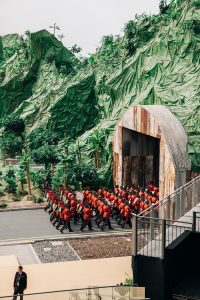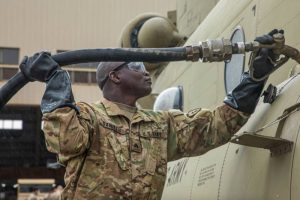Since 1955, the World Press Photo Foundation is awarding the most striking and representative images that illustrate the events of our times in the press. The winners of the contest are exhibited this year in 100 cities in 45 countries and is still expanding. The plethora of venues might explain why World Press Photo is so wantonly careless about the way the images are exhibited. About a year and a half ago, i visited the World Press Photo 2008 exhibition at the Museo di Roma in Trastevere during FotoGrafia, Rome’s international festival of photography. There were good quality prints, the light was adequate and the space was lovely. Two weeks ago i saw the new WPP exhibition in Turin this time and it was dreadful. I’m all for financing culture but paying 6 euros to see bad prints of the original images glued on panels which were planted in a room lit like an underground parking lot is not exactly my idea of an exhibition that does justice to the work of talented photographers.
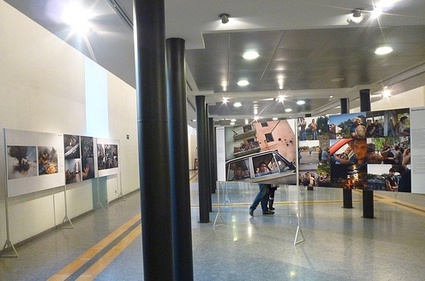
Here’s some of the photos i liked the best:
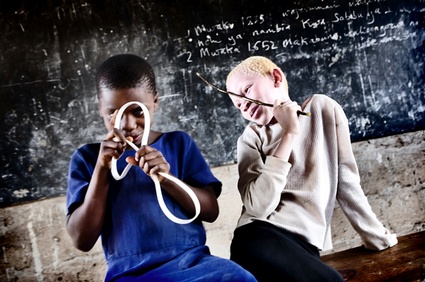
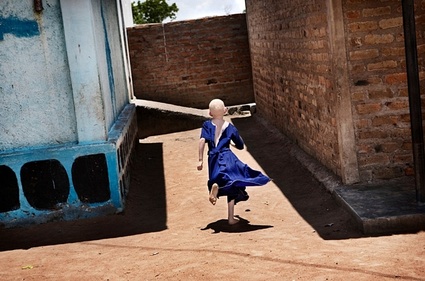 Copyright Johan Bävman /MOMENT, Albino – In the shadow of the sun, 2nd prize contemporary issues stories 2009
Copyright Johan Bävman /MOMENT, Albino – In the shadow of the sun, 2nd prize contemporary issues stories 2009
Johan Bävman followed the lives of Tanzanian albinos, an exposed and vulnerable group in one of the world’s poorest countries. Many African albinos are hunted and killed for their body parts, believed to bring luck, wealth, good health, etc. In addition to discrimination, and a recent wave of murders, the albino population face serious medical issues. Eye problems often lead to a lack of education among albino people and living under the equatorial sun exposes them to skin cancer.
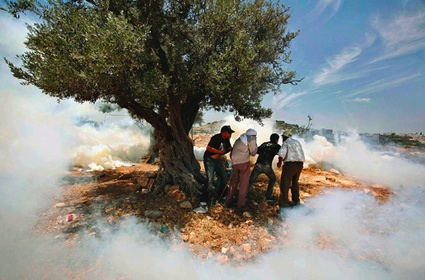 Kevin Frayer, The Associated Press. 3rd prize singles and 1st prize of the public
Kevin Frayer, The Associated Press. 3rd prize singles and 1st prize of the public
Palestinian protestors take cover behind an olive tree as they get caught in tear gas fired by Israeli troops, in the West Bank village of Ni’lin, near Ramallah, in May. Residents of the village began staging weekly demonstrations in May against Israel’s extension of a barrier which would cut off part of their farmland and therefore endanger their livelihood.
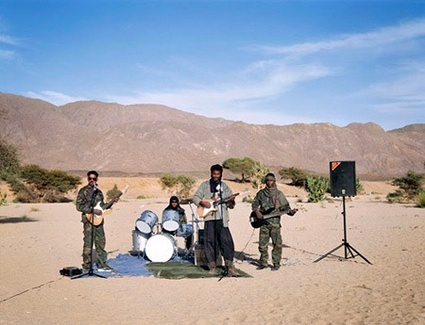 Philippe Dudouit, from The Tuareg Rebels. 2008. Contact Press Images. 3rd prize stories
Philippe Dudouit, from The Tuareg Rebels. 2008. Contact Press Images. 3rd prize stories
A band formed by members of the Niger Movement for Justice helps spread the message of the Tuareg, a nomadic people living in an area that crosses a number of North African countries. They complain that they are excluded from local mining income, and lack political representation. Tuareg groups in both Niger and neighboring Mali attacked government facilities and took scores of prisoners, following the collapse of a 2006 ceasefire.
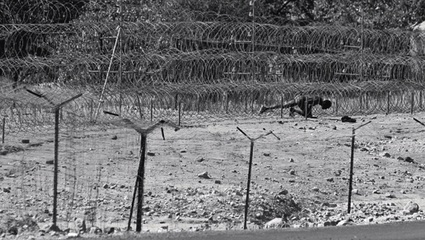 Henk Kruger, Cape Times. 2nd prize singles
Henk Kruger, Cape Times. 2nd prize singles
A Zimbabwean man crawls through the border fence from Zimbabwe into South Africa, close to Beit Bridge, on May 21. Zimbabwe was experiencing spiraling hyperinflation and critical unemployment. Official figures set immigration to South Africa at an average of 96,000 per month, not taking illegal migrants into account. In May, xenophobic violence broke out in Gauteng province, around Johannesburg. Attacks against migrants accused of taking homes and jobs from locals went on for several weeks, leaving around 60 people dead.
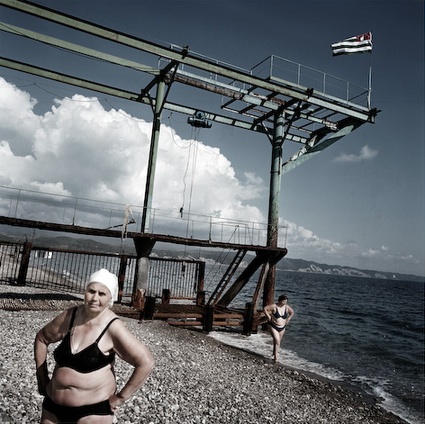 Davide Monteleone (Contrasto), From the series Abkhazia Independent. 1st prize stories
Davide Monteleone (Contrasto), From the series Abkhazia Independent. 1st prize stories
Women bathe on Pitzunda beach, on the Black Sea coast. Abkhazia was once popular as a holiday destination for the Soviet elite. During the 2008 South Ossetia War, Russian and Abkhazian forces attacked the Georgian units located in the region and occuped Kodori Gorge. The majority of the population was forced to move to Western Georgia. The Russian Federation recognized the independence a Abkhazia in August 2008.
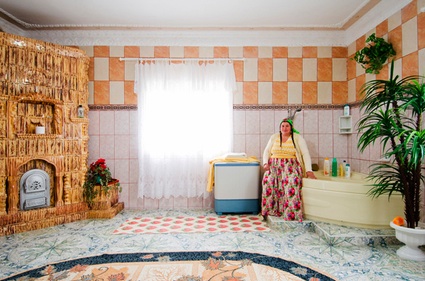
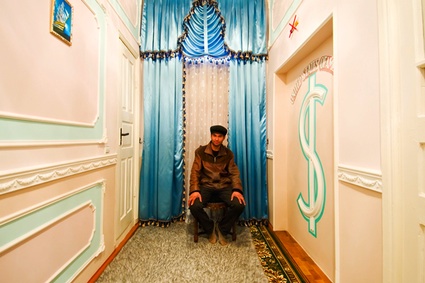 Carlo Gianferro, Gypsy Interiors / Roma Interiors for Postcart, 1st prize portraits stories World Press Photo 2009
Carlo Gianferro, Gypsy Interiors / Roma Interiors for Postcart, 1st prize portraits stories World Press Photo 2009
Carlo Gianferro‘s Gypsy Interiors opens the doors of the homes of affluent Roma in Romania and Moldova. Little is allowed to disturb the flamboyant and spotless rooms. Kitchen, for example, serve primarily for display, as women prefer to cook outdoors in communal cauldrons amongst friends and neighbours.
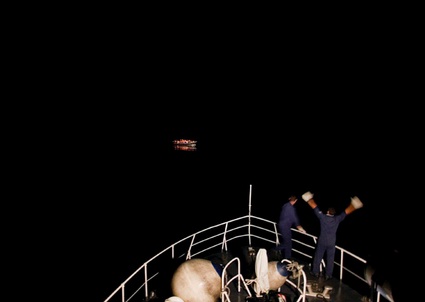 Mashid Mohadjerin, Reporters/Redux Pictures. 1st prize singles
Mashid Mohadjerin, Reporters/Redux Pictures. 1st prize singles
Italian Coastguards find a lost, overloaded migrant boat from Libya after hours of search, Mediterranean Sea, Italian waters around the island of Lampedusa, Italy, July 30, 2008. Just off the coast of Tunisia, Lampedusa forms part of a much-used route for illegal immigration from Africa into Europe. Authorities on the island struggled to cope with an increase of 75% in migrant arrivals in 2008. Detention centers were filled beyond capacity, forcing hundreds to sleep outdoors.
The exhibition is on view this week in Istanbul, Jakarta, Tel Aviv, Kapfenberg, and soon in Leipzig, Jena and Torun.
Photo on the homepage: Davide Monteleone, Contrasto. Men sit in a coffee bar in the Abkhaz capital Sukhumi.
Previously: FotoGrafia, Rome’s international festival of photography – Part two.




